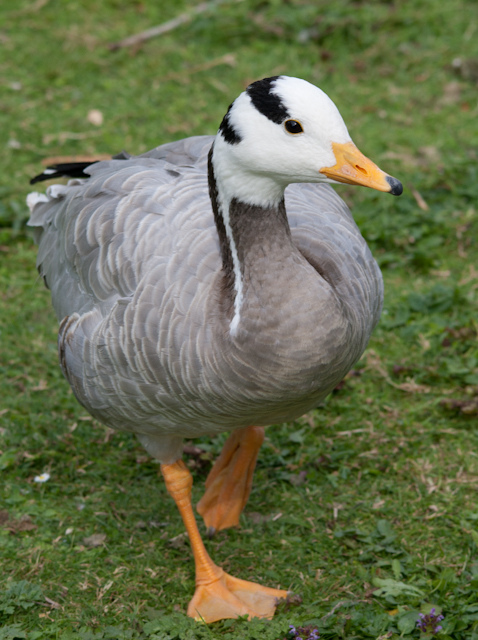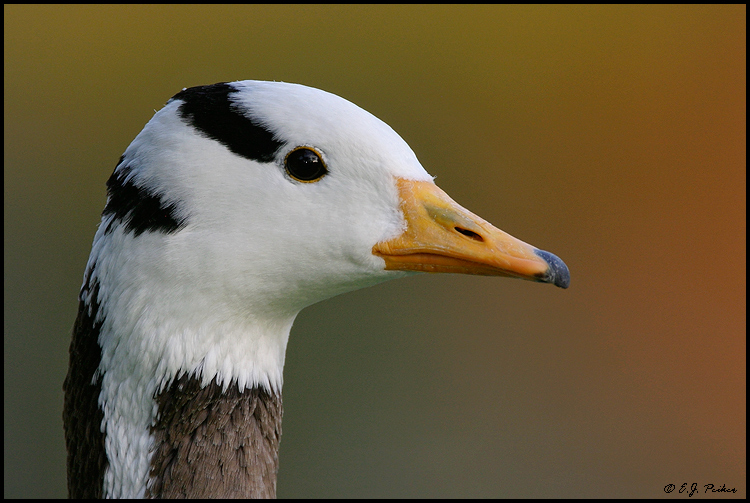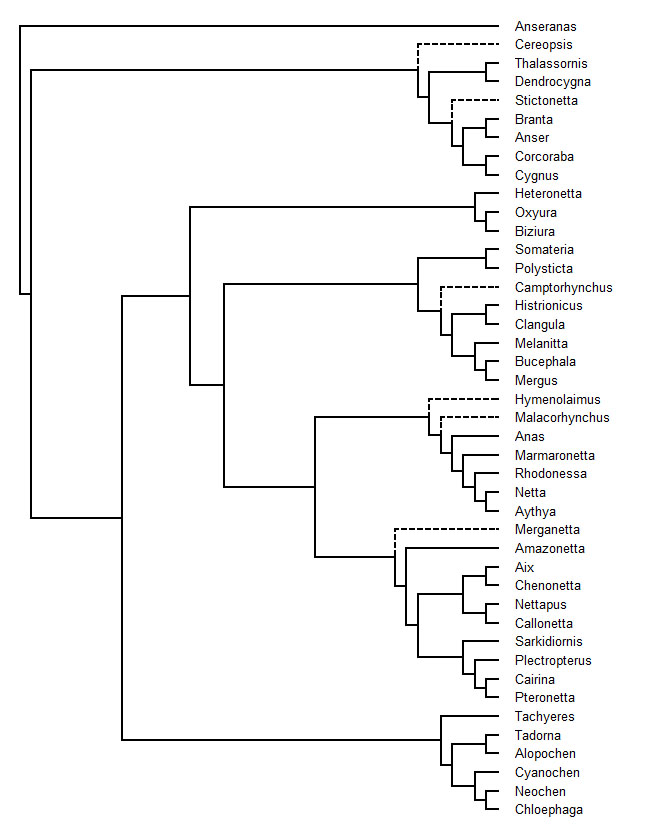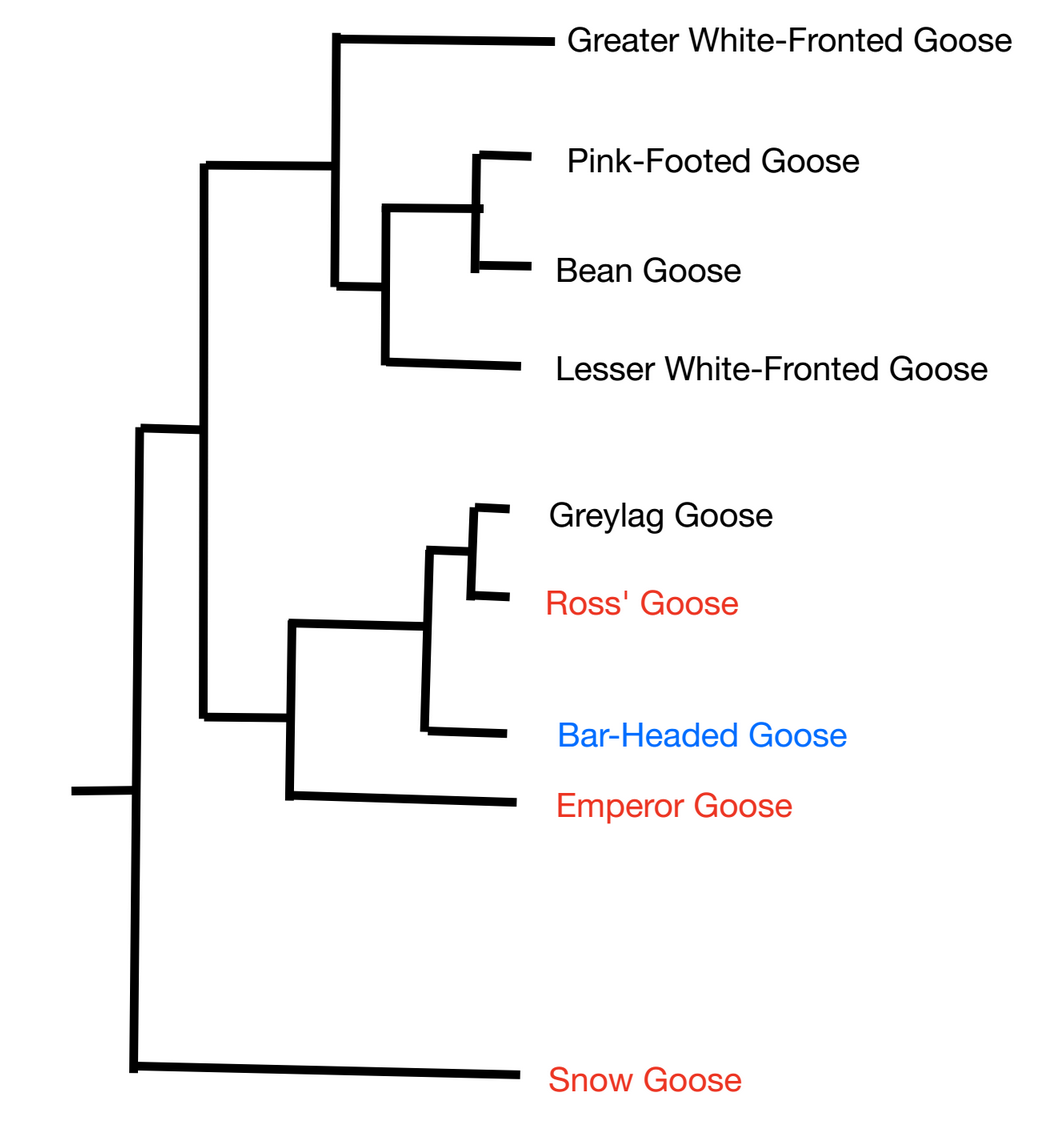Classification
Domain - Eukarya
Kingdom - Animalia
Phylum - Chordata
Class - Aves
Order - Anseriformes
Family - Anatidae
Genus - Anser
Species - Anser indicus
The bar-headed goose possesses mitochondria, a trait
of the domain Eukarya derived from endosymbiosis with a bacterium.
Being multicellular, lacking a cell wall, and producing sexual gametes
through meiosis distinguish this organism under the kingdom Animalia.
 This goose shares traits with the phylum Chordata, such as triploblastic
tissue, deuterostome development, a notochord and hollow dorsal nerve chord,
and gill slits and a tail during its development (The Global Biodiversity
Information Facility, 2013).
This goose shares traits with the phylum Chordata, such as triploblastic
tissue, deuterostome development, a notochord and hollow dorsal nerve chord,
and gill slits and a tail during its development (The Global Biodiversity
Information Facility, 2013).
Synapomorphies of the class Aves shared by the bar-headed goose include
feathers, a beak, reproduction by egg-laying, as well as wings and a
four-chambered heart (both by convergent evolution) (The Global Biodiversity
Information Facility, 2013).
The common ancestor of the order Anseriformes possessed water-dwelling
adaptations present in the barheaded goose. One adapta tion is webbed feet.
Another synapomorphy is the structure of the bill apparatus for feeding.
Inside, these birds have a tongue specially formed for suctioning water and
food particles, then ejecting the water to trap the food within filters
called lamellae.
tion is webbed feet.
Another synapomorphy is the structure of the bill apparatus for feeding.
Inside, these birds have a tongue specially formed for suctioning water and
food particles, then ejecting the water to trap the food within filters
called lamellae.
 The
Anatidae family includes all ducks, swans, and geese, including this
bar-headed organism (The Global Biodiversity Information Facility,
2013).
The
Anatidae family includes all ducks, swans, and geese, including this
bar-headed organism (The Global Biodiversity Information Facility,
2013).
The cladogram to the left shows the evolutionary history and relatedness of
Anatidae family genuses. The bar-headed goose belongs to Anser
(seven from the top). Some other familiar organisms that fit into this
tree include the colorful
wood duck of genus Aix, and the beautiful
mute swan
of Cygnus.
The bar-headed goose shares several morphologies with the other gray geese
of the genus Anser: orange legs, feet and beak, light or white-colored
underbody, and primary colors gray, black, and white throughout its plumage
(The Global Biodiversity Information Facility, 2013).

The cladogram to the right shows the evolutionary relationship of the Anser
genus. However, because this phylogeny was made using DNA sequencing, it
includes species of the genus, Chen (in red), which were not
thought to be closely related when they were named. The bar-headed goose is
shown as being most closely related to the greylag goose (Anser anser),
genetically and by name. This cladogram was constructed by the authors of
this website based upon data by Lee et al., 2008.
Anser is the Latin word for goose. Indicus is derived from the Latin word
Indus, meaning Indian. So, Anser indicus translates literally to Indian
goose, which is very logical for the geographical location and migratory
pattern of the bar-headed goose (Latin-Dictionary, 2014).
Continue to
Habitat to discover where the bar-headed goose resides.
...Or go
Home.